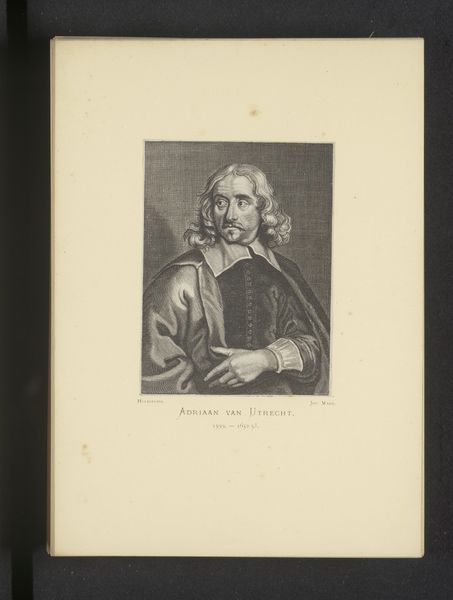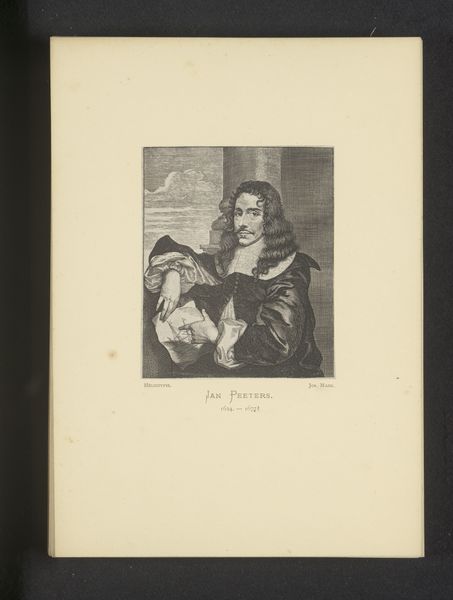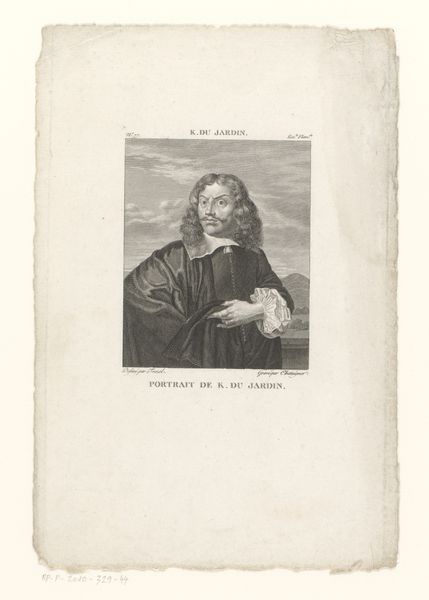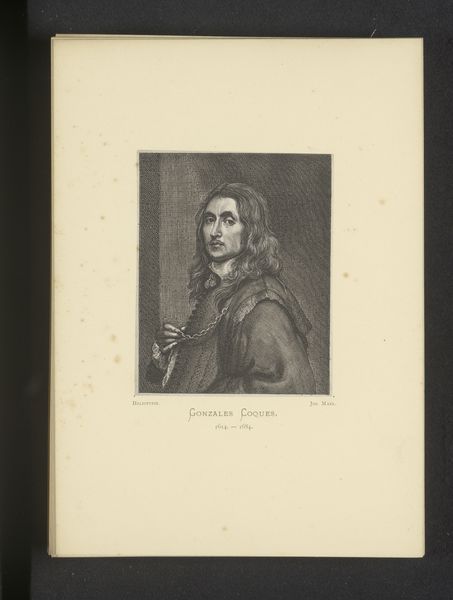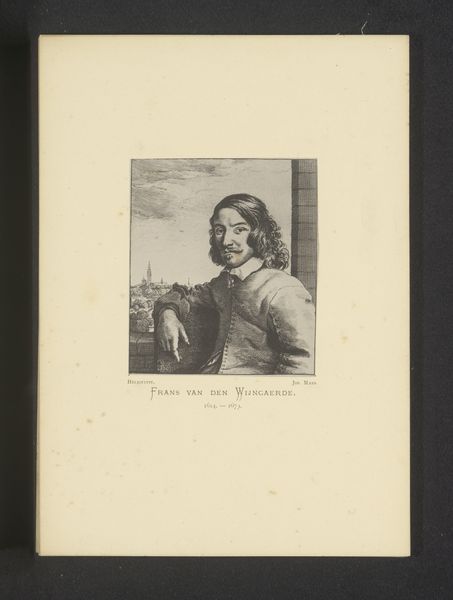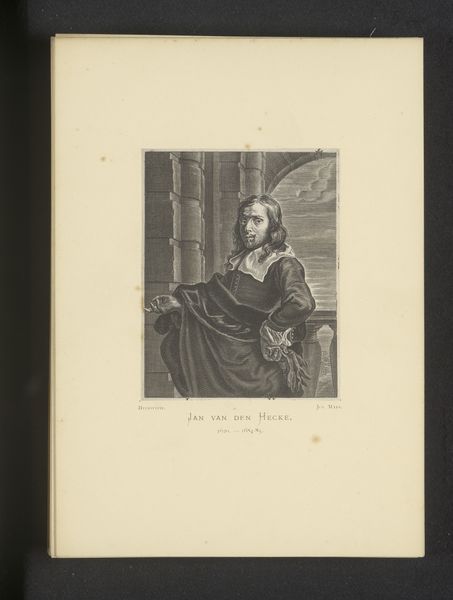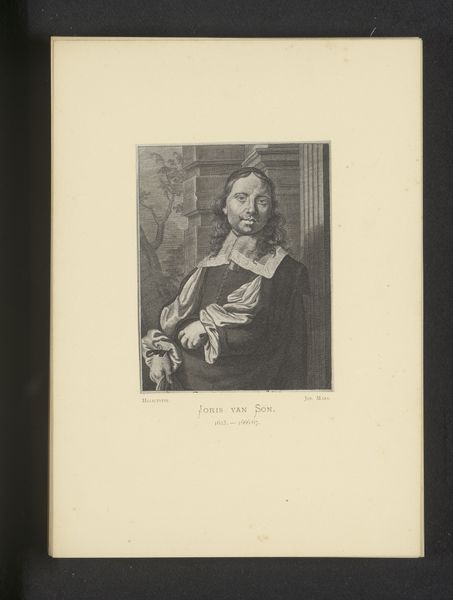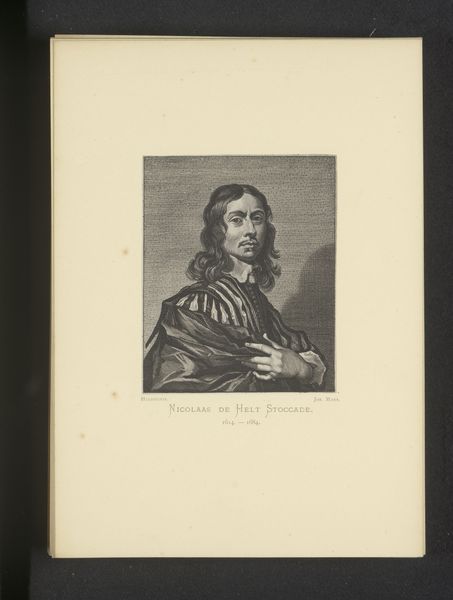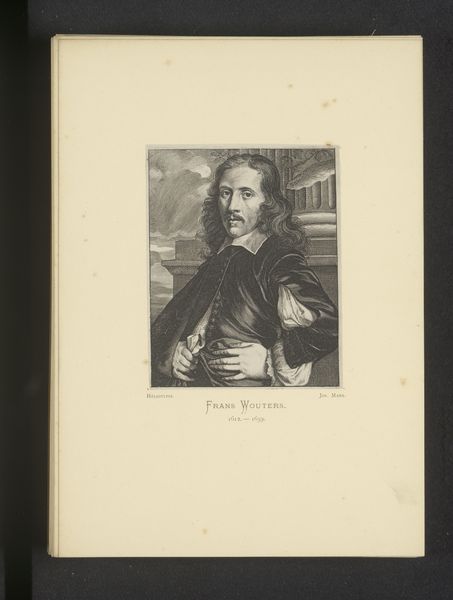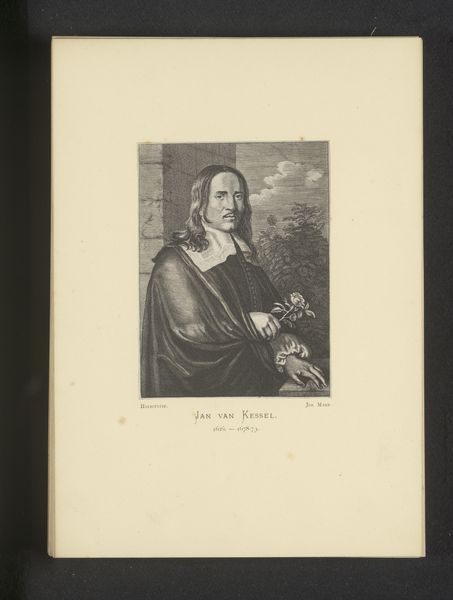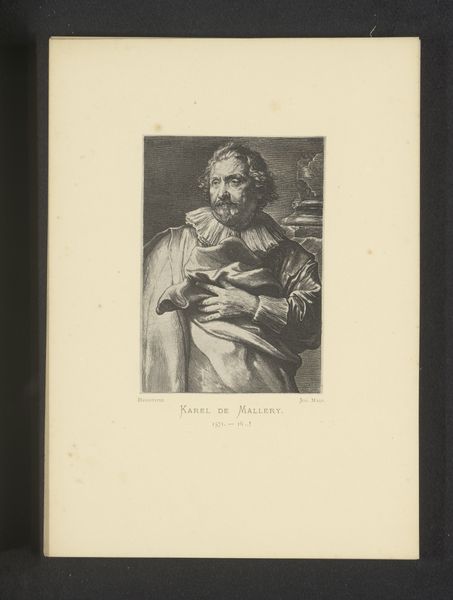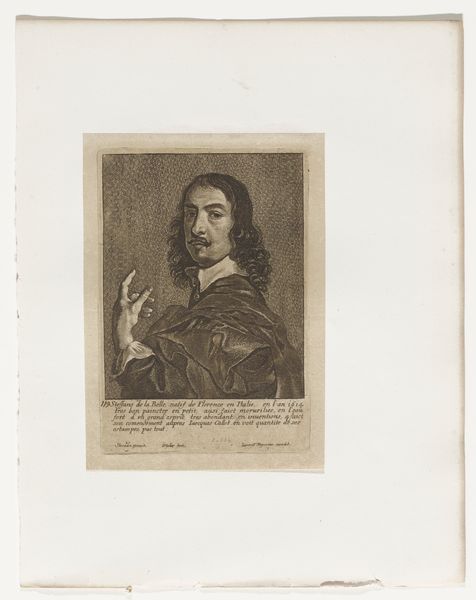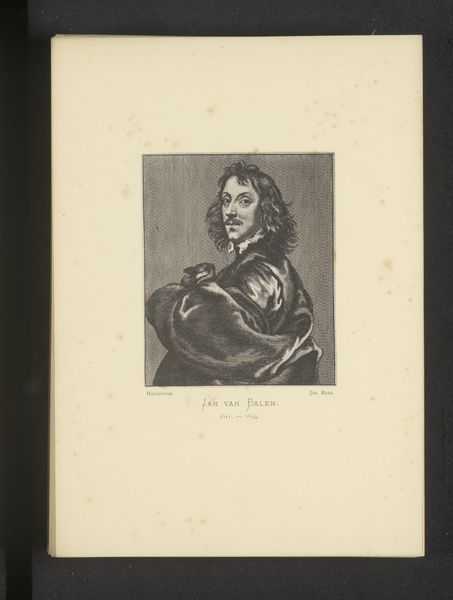
Reproductie van een gravure van een portret van Jan Philip van Thielen door Richard Collin before 1877
0:00
0:00
Dimensions: height 119 mm, width 92 mm
Copyright: Rijks Museum: Open Domain
Curator: Here we have a reproduction of an engraving, depicting Jan Philip van Thielen. The engraving itself was created by Richard Collin, likely some time before 1877. It is a print on paper. Editor: It has a wistful feel. The figure is posed in front of what seems like a painted landscape. And there’s a potted plant too, it appears, included within the scene itself. Curator: The portraiture in the Baroque style follows established conventions of composition. Consider the precise line work achieved via engraving and the balanced distribution of light and shadow that model the subject's face and garments. Editor: Yes, conventions are definitely at play here. What I find interesting is van Thielen's own story. He was, if you remember, a member of a family with deep artistic roots but refused to sign his work for almost 20 years in protest against guild rules! A political stance, to protect both his identity and artistic freedom. This print would allow accessibility to wider audiences, thereby supporting his convictions. Curator: I concur; the widespread distribution achieved through printing allowed for a degree of autonomy outside the restrictive guild systems. The contrast between light and dark in the composition certainly draws the eye. It also underscores his societal rank; you see him here presented with the affectations and emblems of a well-to-do merchant: gesture, plant, drapery. It reinforces class hierarchy through its calculated realism. Editor: True, although I might suggest van Thielen’s resistance and commitment to artistic agency shouldn’t be undervalued, since it intersects with the classism of his day. It speaks volumes about the challenges faced by artists then. How do we balance celebrating artistic achievements and understanding such social disparities? Curator: A delicate balance indeed! This portrait offers an intriguing lens through which we view art, commerce, and society’s rules. Editor: Absolutely! This artwork shows how crucial the medium and the social milieu are in understanding both artist and work.
Comments
No comments
Be the first to comment and join the conversation on the ultimate creative platform.
